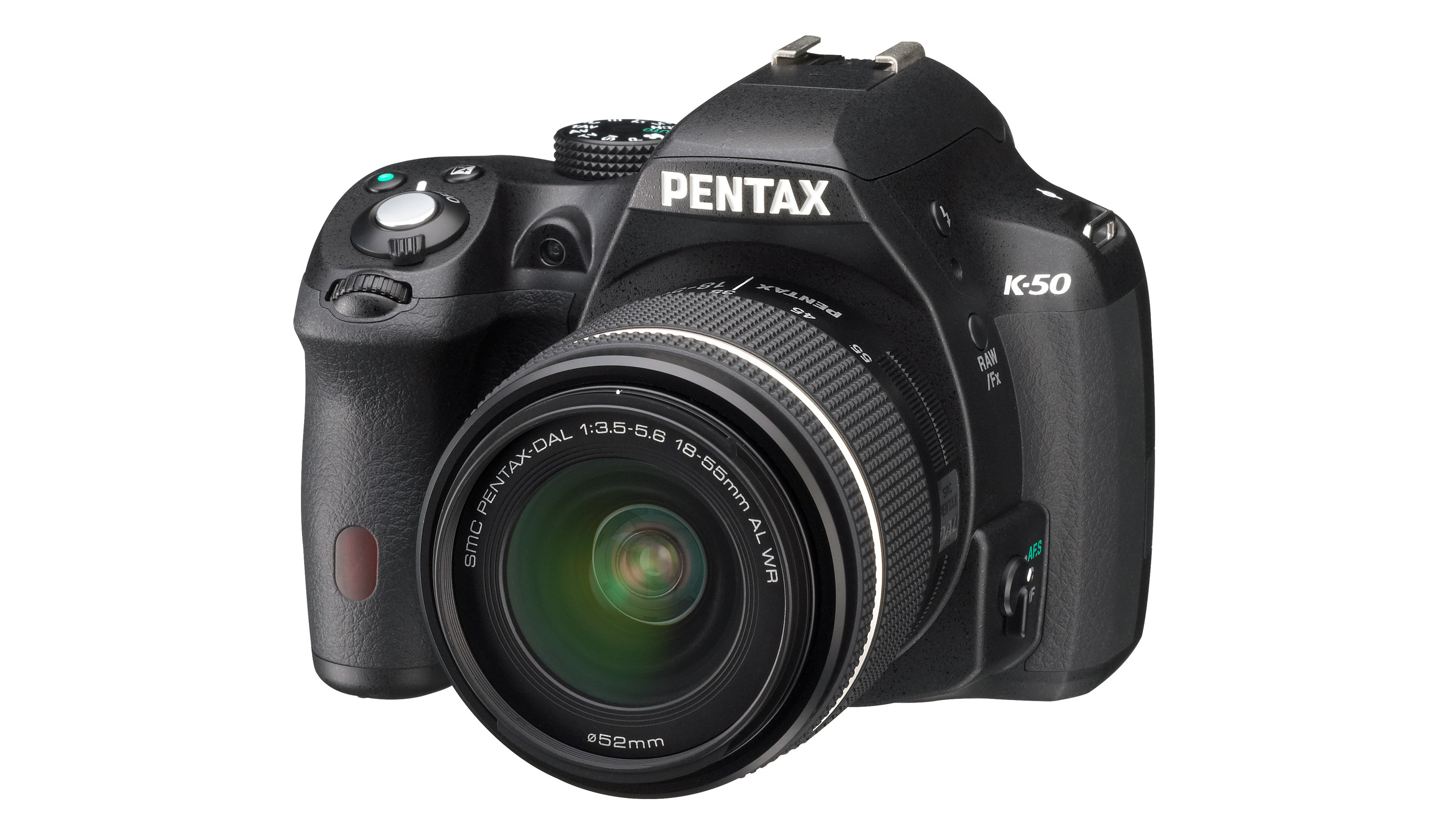Why you can trust TechRadar
We've been pretty impressed with the performance of Pentax cameras of late, which it perhaps ultimately owes to the Sony sensor which lies at its heart. We have come to expect Sony sensors to be excellent, and the K-50 is thankfully no different.
Colours straight from the camera are bright and punchy. It's interesting to compare the JPEG image output with the raw format (DNG) files, which show noticeably more muted colours – the idea is obviously to give you the most scope with raw format files, while making JPEG images look pleasing if you want to do minimal post processing work – something which is more likely with entry-level cameras.
Detail resolution is generally good, with little evidence of image smoothing or smudging especially at the lower end of the sensitivity scale. The K-50 comes with an 18-55mm lens as part of its kit package. This lens is an adequate performer for all-round work, giving a flexible focal length. Probably the biggest gripe we have with this lens is the loud noise it makes while focusing, otherwise it's a good optic to get you started with.

Other Pentax cameras we've tested have had slight problems with the metering system, and it seems as if the K-50 is suffering from the same affliction. The camera has a tendency to underexpose in certain conditions, such as high contrast, so you may need to either dial in some exposure compensation, or change the metering mode to spot metering to get better results. Where the light is a bit more stable, the camera has less of a problem and produces pleasingly exposed images.
Automatic white balance does a good job of accurately representing colours, even when shooting under artificial or mixed lighting conditions. You can change the automatic setting to a more appropriate one if you prefer, but we found that wasn't generally necessary in the majority of conditions.
One of the improvements this camera sees over the K-30 is the improved processor and therefore improved sensitivity range. Images taken at high sensitivities, such as ISO 1600, display a good level of detail, without introducing too much noise into the equation. Images taken at ISO 3200 are also very good, although if you examine them very closely you will find examples of some image smoothing, as is to be expected. When sharing the images at normal web sizes, or printing them at A4 or below, we'd be happy to use up to ISO 3200 without worrying too much about reduction in quality. For the best quality, I would be inclined to keep sensitivity below 1600 though.
Autofocus
Autofocusing is generally pretty swift, especially when using one of the 9 cross-type AF points. We found that although focusing speeds dropped in low light, it wasn't too concerning, although there is the aforementioned noise of the focusing mechanism to worry about when shooting in quiet environments with the kit lens. Luckily, the lens doesn't hunt about too badly to make the situation worse. I found on a couple of occasions the camera presented a false positive in terms of focusing, especially when shooting in limited lighting conditions, but overall it wasn't too bad.
Pentax has included a number of digital filters that can be used with the K-50, presumably in a bid to appeal to the Instagram crowd. Unfortunately, some of these filters leave a lot to be desired, with some strange, slightly old-fashioned (but not in a good way) choices. It's worth experimenting with them though, to see if you like any of them. It's also a shame that you can't use these when shooting in raw format, so if you use one, you'll be stuck with it forever.
It's perhaps therefore more advisable to experiment instead with Custom Images, which allows you to shoot in raw format, and gives you more control over the look of your image. There are plenty of creative options here, such as Cross Process and Monochrome, so I found using these was much more interesting than the filters that are offered.
Current page: Performance
Prev Page Build quality and handling Next Page Image quality and resolutionAmy has been writing about cameras, photography and associated tech since 2009. Amy was once part of the photography testing team for Future Publishing working across TechRadar, Digital Camera, PhotoPlus, N Photo and Photography Week. For her photography, she has won awards and has been exhibited. She often partakes in unusual projects - including one intense year where she used a different camera every single day. Amy is currently the Features Editor at Amateur Photographer magazine, and in her increasingly little spare time works across a number of high-profile publications including Wired, Stuff, Digital Camera World, Expert Reviews, and just a little off-tangent, PetsRadar.

